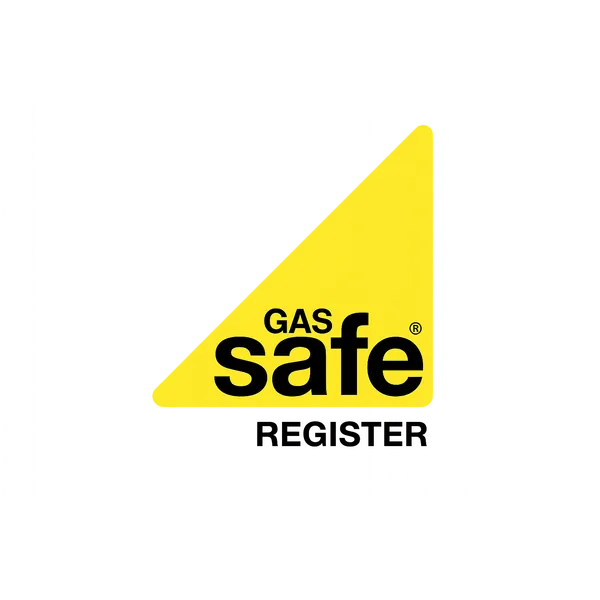How a Ventilation System Can Actually Help Reduce Your Heating Bills
When most people think about reducing heating bills, they typically focus on upgrading their boiler, adding insulation, or installing double-glazed windows. Few consider that a properly designed ventilation system could be one of the most effective ways to cut energy costs while dramatically improving indoor air quality. At CRG Direct, we've helped numerous homeowners and businesses discover that modern ventilation isn't just about fresh air—it's about intelligent energy management.
The Traditional Ventilation Paradox
For decades, ventilation and heating have been seen as competing systems. Opening windows to let in fresh air meant letting expensive heated air escape, creating a constant battle between comfort and cost. This traditional approach to ventilation—whether through open windows, trickle vents, or basic extractor fans—results in significant heat loss that directly impacts your energy bills.
Uncontrolled ventilation can account for up to 40% of a building's heat loss during winter months. Every time you open a window or rely on draughty ventilation methods, you're essentially heating the outdoors while your boiler works overtime to maintain indoor comfort. This creates a vicious cycle where improving air quality comes at a direct cost to your heating efficiency.
The Heat Recovery Revolution
Modern mechanical ventilation with heat recovery (MVHR) systems have transformed this relationship entirely. These advanced systems work on a simple but brilliant principle: they extract stale, warm air from your building while simultaneously bringing in fresh, cold air from outside. The magic happens in the heat exchanger, where up to 95% of the heat from the outgoing air is transferred to the incoming fresh air.
Understanding Heat Recovery Efficiency
Heat recovery efficiency measures how effectively a system transfers heat from exhaust air to incoming fresh air. High-quality MVHR systems typically achieve efficiencies between 85-95%, meaning that for every £1 worth of heat you would normally lose through ventilation, you're only losing 5-15p. This represents a dramatic improvement over traditional ventilation methods.
The efficiency isn't just about temperature transfer—it's about energy conservation. By recovering heat that would otherwise be wasted, these systems significantly reduce the workload on your heating system. Your boiler or heat pump doesn't need to work as hard to maintain comfortable temperatures, leading to lower energy consumption and reduced running costs.
Beyond Temperature: Humidity Control Benefits
One of the most overlooked aspects of ventilation's impact on heating costs is humidity control. High humidity levels make rooms feel colder than they actually are, leading many people to turn up their thermostats unnecessarily. Conversely, low humidity can make air feel dry and uncomfortable, again prompting higher heating usage.
Modern ventilation systems with humidity sensors automatically adjust ventilation rates based on actual need. When humidity levels are high (from cooking, showering, or simply human occupancy), the system increases ventilation to remove excess moisture. When humidity is optimal, it reduces ventilation rates to conserve heat. This intelligent approach means you're only ventilating when necessary, rather than constantly losing heat through fixed ventilation rates.
Proper humidity control also has secondary benefits for heating efficiency. Moist air requires more energy to heat than dry air, so by maintaining optimal humidity levels (typically 40-60%), your heating system operates more efficiently. Additionally, controlled humidity helps prevent condensation on windows and walls, which can lead to heat loss through damp surfaces.
CRG Direct's Integrated Approach to Ventilation and Heating
At CRG Direct, we don't view ventilation and heating as separate systems—we design them as integrated components of your building's overall energy strategy. Our approach focuses on several key principles that maximise energy savings:
Zoned Ventilation Design
Rather than ventilating your entire property at the same rate, we design systems that respond to occupancy patterns. High-moisture areas like kitchens and bathrooms receive more targeted ventilation, while living spaces and bedrooms benefit from gentler, heat-recovered air exchange. This zoned approach ensures that ventilation occurs where and when it's needed most, minimising unnecessary heat loss.
Smart System Integration
Our ventilation systems can integrate with your existing heating controls, creating a cohesive energy management system. When your heating is active, the ventilation system can optimise its operation to complement rather than compete with your heating strategy. Some advanced systems can even use excess heat from appliances or solar gain to pre-warm incoming air, further reducing heating demands.
Building-Specific Optimisation
Every building has unique characteristics that affect both ventilation needs and heating efficiency. We conduct comprehensive assessments of your property's insulation levels, air tightness, orientation, and occupancy patterns to design a ventilation solution that works in harmony with your heating system. This tailored approach ensures maximum energy savings without compromising air quality.
Calculating the Real Savings
The financial benefits of installing a heat recovery ventilation system extend beyond simple energy bill reductions. Consider these comprehensive savings:
-
Direct Energy Savings: Most homeowners see a 20-40% reduction in heating costs after installing an MVHR system, depending on their previous ventilation methods and property characteristics.
-
Reduced Maintenance Costs: By maintaining optimal humidity levels, these systems help prevent damp-related damage to building fabric and reduce the likelihood of mould growth, potentially saving thousands in future repairs.
-
Improved Heating System Longevity: When your heating system doesn't need to work as hard to compensate for heat loss through ventilation, it experiences less wear and tear, extending its operational life.
-
Health Benefits: Better indoor air quality can lead to fewer respiratory issues and allergies, potentially reducing healthcare costs and improving overall wellbeing.
The Future of Building Energy Efficiency
As building standards continue to evolve toward greater energy efficiency and sustainability, heat recovery ventilation is becoming an essential component rather than an optional extra. The latest building regulations increasingly recognise the importance of controlled ventilation in achieving net-zero targets and reducing carbon emissions.
Modern MVHR systems represent the convergence of comfort, health, and efficiency. They demonstrate that we no longer need to choose between fresh air and warm homes—we can have both while saving money and reducing our environmental impact.
Making the Switch: What to Consider
If you're considering upgrading to a heat recovery ventilation system, several factors will influence your potential savings:
- Property Age and Construction: Newer, more airtight properties typically see greater benefits from MVHR systems
- Current Ventilation Methods: If you currently rely on open windows or uncontrolled ventilation, your savings potential is higher
- Heating System Type: The compatibility between your existing heating system and new ventilation technology
- Occupancy Patterns: How many people live in the property and their daily routines
At CRG Direct, we provide detailed energy assessments that calculate your specific savings potential based on these and other factors unique to your situation.
Conclusion: Ventilation as an Investment
Viewing ventilation as an energy-saving investment rather than just an air quality measure represents a fundamental shift in how we approach building efficiency. The combination of heat recovery technology, intelligent humidity control, and integrated system design means that modern ventilation systems can pay for themselves through energy savings while providing superior indoor comfort.
The days of choosing between fresh air and affordable heating are over. With the right ventilation strategy, you can achieve both objectives simultaneously, creating healthier, more comfortable living environments while significantly reducing your energy bills.
Ready to discover how much you could save on your heating bills with intelligent ventilation? Contact CRG Direct today for a comprehensive energy assessment and personalised ventilation solution designed to maximise your savings while improving your indoor air quality.















